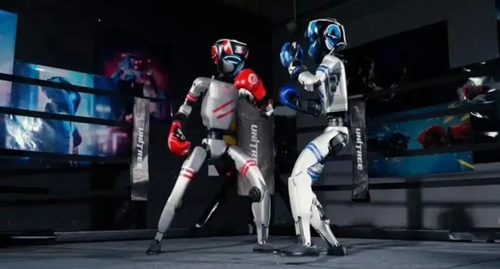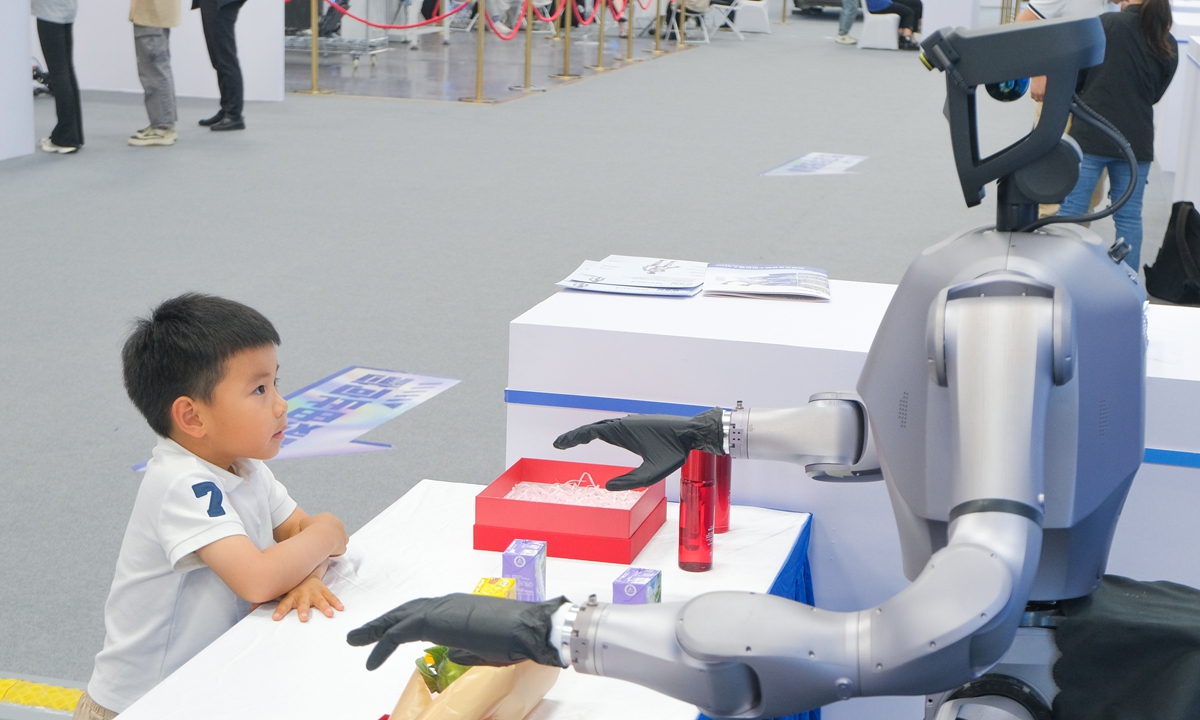
Black Panther 2.0. Photo: CCTV
A robotic dog competition debuted at the latest round of the China Media Group (CMG) World Robot Competition held in Guanggu of Wuhan, Central China's Hubei Province, on Sunday, showcasing China's technological innovation and advanced manufacturing capabilities.
The first robotic dog contest included a variety of robot competitors, including patrol and prevention robots, counter-terrorism and bomb disposal robots, and robots trained in natural behavior learning, according to the CMG.
Among the highlights were star robotic dog XT70, developed by Hangzhou-based Wuba Intelligent Technology, a subsidiary of China North Industries Group, showcasing real-world rescue and emergency response capabilities, and one of the world's fastest quadruped robots, Black Panther 2.0. which now outpaces most humans in sprinting, developed by a humanoid innovation institute under Zhejiang University and Hangzhou-based start-up Mirror Me, engaging in a 100-meter human-machine showdown.
At the live show, the XT70 robotic dogs showed their all-around capabilities in emergency rescue scenarios - operating in high-temperature fires, collapsed buildings, and other harsh environments filled with smoke or toxic leaks.
The company said that in special circumstances, such as when a fruit crate was knocked over, the robotic dog could autonomously stop or navigate around obstacles to continue its patrol. If curious passers-by blocked its path to take photos, the robot activated a voice prompt to ask them to move.
This dog robot mission performance is just the beginning, with more exciting robot contests to be aired in August, according to the CMG.
"What we're witnessing is the transition of precision robotics from the lab to the real world, featuring robots performing tasks such as doing household chores, like ironing and cleaning toilets and performing more advanced duties in industrial settings, like packaging goods and manufacturing products. These capabilities show their potential to transform everyday life and industrial processes, offering a glimpse into the future of robotics," Zhong Xiangyun, a humanoid robot industry observer, told the Global Times on Sunday.
China is the world's largest manufacturer and user of robots and such competitions are expected to drive the development of robotics technology for the benefit of society, and contribute to China's ambition of becoming a global technology powerhouse, Zhong added.
The competition came after the 2025 RoBoLeague Robot Football Tournament, China's first fully autonomous 3v3 AI robot football competition, concluded in Beijing on June 28.
From half-marathons to boxing matches and football, as well as the robot dog competition, the frequency, scale, and public attention toward robot competitions have been visibly increasing. The continuous stream of events has gradually familiarized the public with the capabilities of humanoid robots and artificial intelligence (AI) technology.
Industry experts pointed out that with drivers such as real-world applications, AI advancements, full supply chains, and supportive policies, the robotics industry may be nearing an inflection point.
According to the Gaogong Robot Industry Research Institute, global sales of quadruped robots reached 34,000 units in 2023, and are expected to exceed 560,000 units by 2030. The potential market for industrial-grade quadruped robots is set to exceed 500 billion yuan ($69.8 billion).
China has become the world's largest market for robot applications. In recent years, the rapid growth of the country's robotics industry has led to the deployment of robots across various sectors, including warehouse logistics, education and entertainment, cleaning services, security inspection and medical rehabilitation, the Xinhua News Agency reported.



